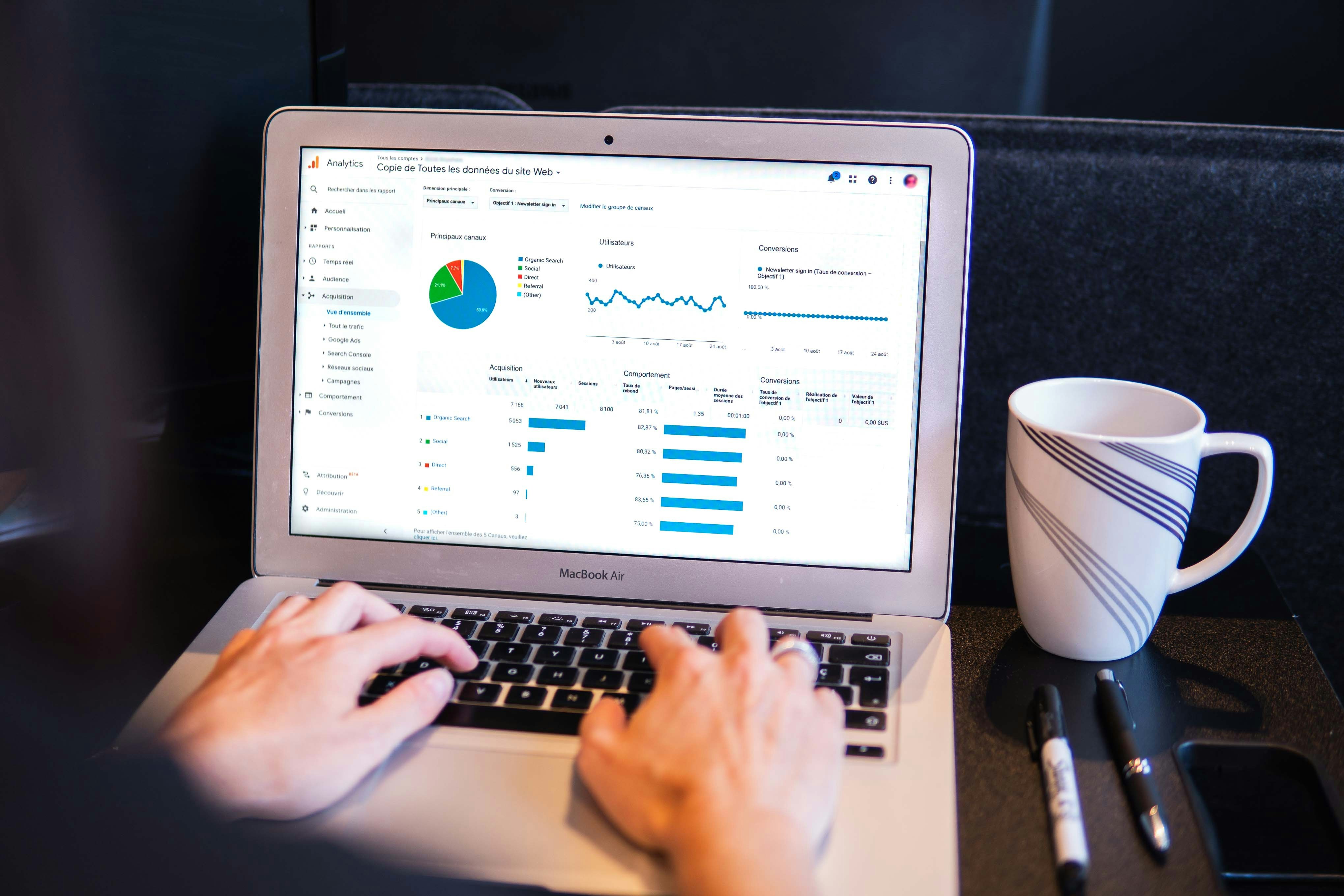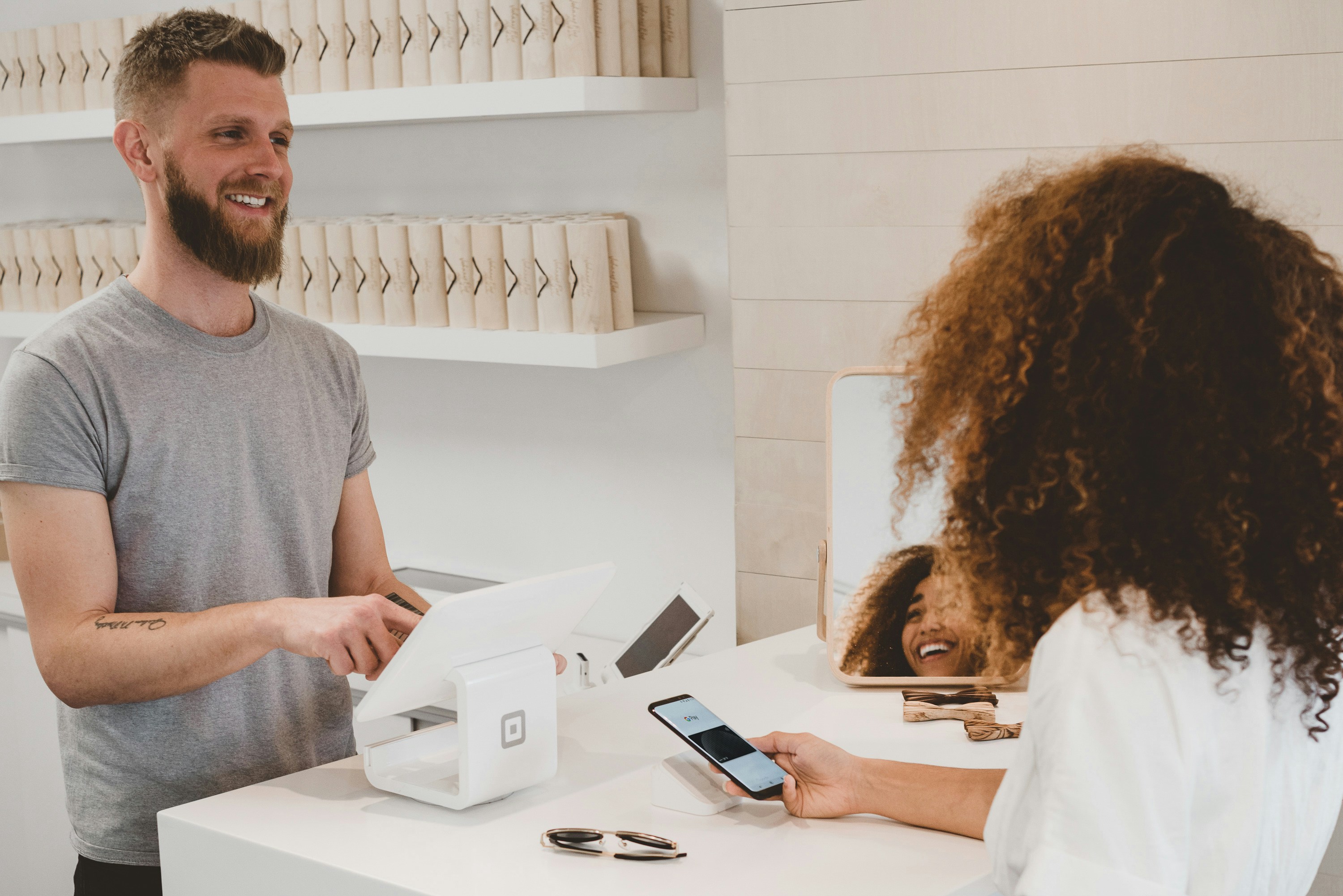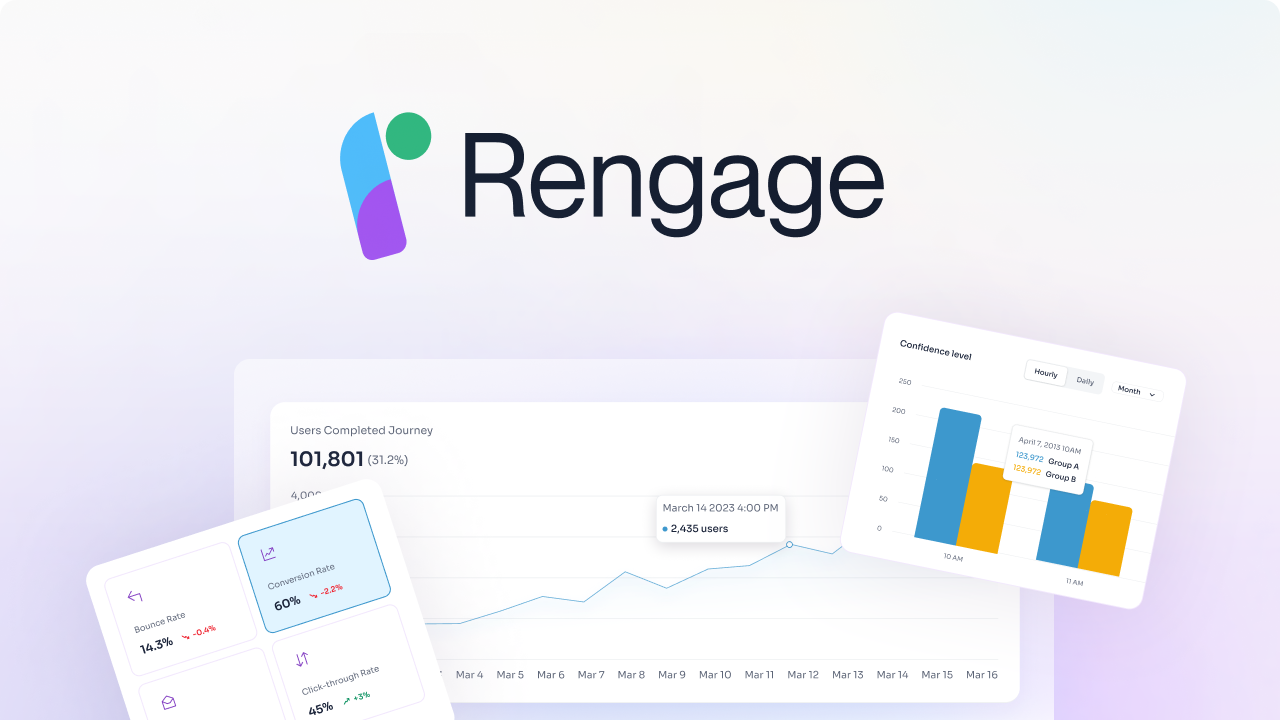In today's digital age, customer journeys are more complex than ever before. Understanding and optimizing the omnichannel customer journey is the key to business success. By adopting an omnichannel approach, you can provide a seamless and consistent experience across all touchpoints. This blog post will explore the significance of the omnichannel customer journey, highlighting its benefits and challenges. Dive into insightful strategies to master customer lifecycle management and unlock the full potential of your business's omnichannel journey.
What Is an Omnichannel Customer Journey?

Omnichannel customer journey refers to the seamless integration of online and offline channels to create a unified and consistent customer experience. This strategy ensures that customers can switch between multiple channels when interacting with a brand and have their experience connected and uninterrupted. In today's digital era, where customers expect personalized and consistent interactions across all touchpoints, implementing an omnichannel approach has become crucial for businesses.
Importance of Consistency Across Channels
Consistency across channels is vital in providing a seamless customer journey. Customers expect that their interactions with a brand on different platforms will be consistent and connected. This consistency builds trust and loyalty, as customers feel understood and valued when their preferences and history are recognized across various touchpoints. Businesses that deliver consistent experiences across channels are more likely to retain customers and drive revenue growth compared to those with fragmented interactions.
Enhanced Customer Engagement
By integrating online and offline channels cohesively, businesses can engage customers effectively, leading to higher satisfaction and loyalty. Omnichannel strategies enable businesses to meet customers where they are, be it on a website, social media, mobile app, or in-store, providing a more personalized and tailored interaction.
This personalized engagement enhances customer satisfaction, increases conversion rates, and encourages repeat purchases. Engaging customers consistently across channels also helps in building a strong brand reputation and positive word-of-mouth referrals.
Personalized Interactions
In an omnichannel customer journey, personalization is key to delivering relevant and meaningful interactions. By leveraging customer data and insights gathered from various touchpoints, businesses can tailor their communication, recommendations, and offers to meet individual needs and preferences. Personalized interactions create a more humanized experience, making customers feel valued and understood. This, in turn, fosters a deeper connection with the brand, driving advocacy and long-term loyalty.
By aligning their strategies to focus on creating a seamless, connected customer experience, businesses can enhance customer satisfaction, increase engagement, and drive revenue growth. Embracing an omnichannel approach enables businesses to meet the evolving expectations of customers and differentiate themselves in a competitive marketplace.
4 Stages in the Omnichannel Customer Journey & Relevant Channels for Each

1. Awareness Stage
During this stage, customers first discover a brand, whether through a paid advertisement, blog article, or social media post. The key is to make people aware of what you offer and acquire new leads. Use content marketing, such as blog articles, whitepapers, and e-books, to offer valuable information without explicitly promoting your brand.
Social media marketing, which includes how-to videos and infographics, reaches a broad audience on platforms like Facebook and Instagram. Influencer marketing, with content like product unboxing videos and sponsored posts, leverages influencers' loyal audiences to share brand recommendations.
2. Consideration Stage
As customers research their pain points and possible solutions, they move to the consideration stage. Create informative content that highlights your competitive advantages, and direct customers to landing pages that provide all necessary information. In-app and on-page marketing strategies, like tutorials and modals, guide customers while using your app or website. This phase focuses on convincing prospects to see your brand as the best choice.
3. Decision Stage
The decision stage is where customers make a final choice and complete a purchase. Utilize live chat marketing and email marketing for direct engagement and personalized recommendations. Continue engaging with customers post-purchase to increase customer lifetime value. In-app and on-page support messaging and knowledge bases offer personalized support and self-service options.
4. Loyalty Stage
After making a purchase, focus on nurturing loyalty and increasing customer lifetime value. Use in-app and on-page support messaging, knowledge bases, and proactive customer engagement strategies. Monitor customer behavior and deliver personalized support to drive loyalty and growth.
Discover the Power of Personalized Customer Interactions
Book a free demo to learn about how you can transform customer interactions into personalized experiences that drive loyalty and growth.
10 Components of an Omnichannel Customer Journey

The touchpoints mentioned above are several you can use as you plan a more immersive customer experience. The following omnichannel customer journey touchpoints must also be included.
1. Email
One of the most popular channels for reaching customers, and arguably the biggest, is email. The personalization potential is high, making email a viable strategy for connecting with your audience. You can segment your audience to determine who sees which messaging and when, incorporate the recipient’s name into the subject line or body copy, and send tailored messages for their birthday or other special occasion.
Marketing resource HubSpot reports that four billion email users check their inboxes daily. That number has steadily increased over the years and should continue its upward trajectory. Email is not poised to become any less important, so prioritize it as a main touchpoint.
2. Social Media
Another can’t-miss communication channel to include in your omnichannel customer journey is social media. Forbes reports that 4.9 billion people use social media globally in 2023, making this another touchpoint you must prioritize as you begin mapping your customer journey. Since the basis of omnichannel marketing is connecting with your audience on their platforms, you must research the social platforms they gravitate toward the most. Whether they like Facebook, LinkedIn, Twitter, Instagram, or YouTube, they strive to build a solid business presence on each.
Engaging with your audience on social media entails doing more than cross-posting blog or website content. You must post high-value, engaging content that interests your audience and gives them a reason to add you to their feed. That can include your own content and reputable third-party posts.
3. Website
Your website is another pillar of omnichannel marketing. As mentioned, your site might be the first touchpoint your audience finds you. Since it kickstarts the customer journey, your website must be optimized for navigability.
- Use split testing to determine which of your elements are the most appealing and which placement to prioritize.
- Put your CTA buttons above the fold, use whitespace effectively, and keep your navigation bar easy to use.
- Consider adding a search bar to the navigation or having it travel with users as they scroll down the page.
- Incorporate your company colors into your design, but choose complimentary hues that don’t clash or hurt the eyes.
- Ensure your website is mobile-optimized, as more than half of your website traffic will come from a mobile device, reports Exploding Topics.
4. Microsites and Landing Pages
Landing pages are one of the most important components of your website. These pages are dedicated to a product or service. You should have landing pages for each product or service your company sells, whether that’s 10 or 100. A landing page is often linked to an ad. Let’s say an internet user clicks an ad for your vacuum cleaner. The ad would redirect them to a landing page for the vacuum. It would be misleading if an ad for a vacuum cleaner took the lead to a landing page for a hairdryer.
Some businesses have expanded upon landing pages, creating microsites. These web page clusters provide more information on a product and service, utilizing its own subdomain or domain. A microsite might allow a customer to check out without clicking off the site, expediting the shopping process and encouraging more sales.
5. Mobile apps
Your omnichannel customer journey may include a mobile app if it suits your business industry or niche. Retailers frequently use apps. The app allows the lead or customer to shop for new items or services, check out, track their order, apply coupons, and do all the other tasks they could achieve on your website. There’s no need to visit your website to shop, which is convenient and efficient. You might periodically reward app users with exclusive discounts or free shipping offers.
If you decide to use a mobile app as part of your omnichannel customer journey, take the time to design the app well. A buggy, glitchy app will hurt your company more than not having an app in the first place.
6. Digital ads
The next component of the omnichannel experience is digital advertising. We spoke of ads generally above, so let’s get more specific now. Your company can select from the following types of digital ads:
- Remarketing
- Video advertising
- Mobile advertising
- Audio advertising
- Social media advertising
- Native ads
- Display ads
Paid search advertising, such as pay-per-click or PPC ads
You will likely embrace several ad styles as you broaden your communication channels. The more types of ads you can incorporate into your campaign, the more complete your list of touchpoints will be.
You must temper your enthusiasm for digital advertising with a realistic monthly budget that doesn’t leave your company in the red.
7. Direct mail
Although a less popular omnichannel option, your business can’t afford to disqualify direct mail. Older consumers are used to receiving catalogs, pamphlets, and flyers in their mailboxes. Younger consumers appreciate the unique approach. Since direct mail comprises a small portion of your omnichannel customer journey, you don’t need a substantial budget.
8. Mobile messaging
SMS marketing or mobile messaging is an increasingly significant part of your omnichannel customer experience. According to SimpleTexting, 42 percent of digital marketers and business owners used SMS marketing in 2021. That number had increased to 55 percent in 2022. Mobile messaging is inexpensive and efficient, allowing you to reach an audience that always has their phones by their sides.
9. Call center
Your company must have a dedicated customer service staff ready to respond to customer questions, demands, and complaints. You should have a customer service phone number, email address, and chat feature. You can use chatbots to engage with your leads and customers when your staff has gone home for the day. AI has made chatbots smarter than ever, capable of quickly answering customer queries and closing more customer tickets.
10. In-Store signage
Brick-and-mortar stores are anything but dead. More consumers would rather shop in a store than online, reports Pricespider, so it would behoove your business to dedicate some of your omnichannel budgets toward elevating the brick-and-mortar experience. In-store signage is one option, and in-store displays are another.
Related Reading
7 Steps for a Frictionless Omnichannel Customer Journey

1. Create Buyer Personas
To begin creating a frictionless omnichannel experience, the first step is to create buyer personas. This involves deeply understanding your target audience's demographics, geographics, and psychographics to learn about their motivations, opinions, interests, and pain points. Once you have this information, you can craft buyer personas, which combine the most recurring traits in your audience groups, making it simpler for marketers and salespeople to reach those target markets.
2. Determine Your Strategy
After crafting customer avatars, the next step is to determine what your omnichannel strategy will look like. This is where you narrow down the platforms and touchpoints you will use to communicate with your audience based on their preferences.
3. Build the Customer Journey Map
With the puzzle pieces coming together, you can now assemble the customer journey map to use for future campaigns. The customer journey typically breaks down into four stages, with appropriate touchpoints varying for each stage. The stages include Awareness, Consideration, Decision, and Delight or Usage.
4. Use The Right Tools
Implementing software tools will make tracking and implementing the customer journey more manageable. Utilizing tools such as Customer Relationship Management (CRM) software, Marketing Automation software, Email Marketing tools, Chatbots, and Analytics and Reporting tools can enhance your omnichannel approach.
5. Review and Implement Feedback
As you expand your communication touchpoints, you will receive audience feedback. Tracking this feedback and listening for recurring themes, both positive and negative, will help you understand what your audience appreciates and what needs improvement.
6. Find All The Gaps
Analyze the omnichannel customer experience to identify any gaps. A fragmented experience could make it harder for you to reach customers and might cause you to lose prospects before they convert. Conducting gap analyses can help fortify the omnichannel experience from start to end.
7. Master Analytics
The analytics gathered from the customer journey can provide valuable insights. Focus on important metrics such as the Customer Effort Score (CES), Customer Satisfaction Score (CSAT), and Net Promoter Score (NPS) to gauge customer satisfaction, effort required, and likelihood of recommendation. Paying attention to these metrics can help in continuously improving your omnichannel customer journey.
Related Reading
- Digital Customer Journey Mapping
- Customer Journey Analysis
- Ecommerce Customer Journey
- B2B Customer Journey
- Customer Journey Orchestration
- Saas Customer Journey
- Marketing Automation Customer Journey
- Customer Journey Optimization
- Micro Moments Customer Journey
- Customer Journey Research
- Customer Journey Automation
- Customer Journey Insights
- Customer Journey Dashboard
- Customer Journey Personalization
- Customer Journey Metrics
- Customer Journey Best Practices
Tools and Technology for Enabling an Omnichannel Customer Journey
1. Rengage

We provide a comprehensive solution for managing and enhancing customer journeys, delivering insights and measurable outcomes with no code. We accelerate your customer journey from onboarding, activation to conversion and churn. Enabling customers to unlock revenue from their existing user.
With Rengage, you can get insights into your segments, run campaigns with an intuitive journey manager, and get insights to measure how your journeys impact users conversion through our Journey Moments and Journey Builder features.
- Journey Moments: insights into your micro-segments
- Journey Builder: intuitive multi-channel marketing automation
- Insights prediction and attribution.
Book a free demo to learn about how you can transform customer interactions into personalized experiences that drive loyalty and growth.
2. UXPressia
UXPressia is a dedicated customer journey mapping tool designed to help you “visualize customer experience and collaborate with your team.” UXPressia offers customer journey maps, personas, impact maps, and even courses. UXPressia’s attractive, visually appealing maps can turn heads.
3. Smaply
Smaply is another dedicated customer journey mapping tool to help you centralize and coordinate customer experience insights. With Smaply’s customer journey mapping software, you can better understand how your customers feel when they use your products and services. Smaply also offers customer persona maps, stakeholder maps, and predesigned templates to make your life easier.
4. Custellance
Custellance is yet another customer journey mapping tool designed for customer journey managers and CX professionals. With Custellence, you can create maps in minutes without requiring complex training.
5. Visual Paradigm
Visual Paradigm is an Agile and Scrum project management tool and offers process map and roadmap tools, including customer journey maps. It’s powerful and offers a bird’s eye view of the entire customer journey.
6. Microsoft Visio
Microsoft Visio is a flowchart and diagramming tool, perfect for creating customized customer journey maps. With stencils, shapes, objects, and flowcharts, and more, Microsoft Visio makes it easy to design even the most complex diagramming tasks. The best part of Microsoft Visio is that it is part of the Microsoft Office Suite.
7. Google Analytics
Google Analytics offers in-depth insights into your customers and business by creating reports using data collected from your websites and applications. With Google Analytics, you can get a complete understanding of customer journeys and behavior — thus improving customer retention.
8. Microsoft Clarity
Microsoft Clarity is a user behavior customer journey analytics tool that offers insights into how your web visitors are interacting with your website. Clarity does this through session recordings, replays, and heatmaps.
9. EngageBay
EngageBay is an all-in-one marketing, sales, and customer support software designed for small businesses and startups. With EngageBay’s powerful web analytics tool, you can see where your traffic is coming from, bounce rates, page views, session duration, exit rates, and the number of sessions.
10. Hotjar
Hotjar offers both feedback and analytics tools to help you understand your customers better. With Hotjar, you get session recordings, on-site surveys, heatmaps, and visual feedback widgets. These survey forms acts as a touchpoint in the customer journey mapping process.
What Is an Example of an Omnichannel Customer Journey?
 Let's walk through two examples of successful omnichannel customer journeys:
Let's walk through two examples of successful omnichannel customer journeys:
The customers
- Thirty-two-year-old Ryan Patel works in corporate IT and is very tech-savvy. He always has his phone and researches nearly every purchase he makes.
- Twenty-nine-year-old Angie Patel is pregnant and plans to work until a week before her due date. She needs help keeping track of all the appointments leading up to the big day. Angie is an active social media user and posts on Instagram daily. She’ll document her new parent journey and find trendy baby products on the channel.
The brands
- Athena Women’s Care Clinic
This regional healthcare provider specializes in serving women throughout their pregnancy. It uses groundbreaking treatments, cutting-edge technology, and a human touch to give expectant mothers all the care and attention they need.
- Bambino baby products
Millennial parents love this brand’s stylish, sustainable options and its exceptional e-commerce experience. This brand will act as an ally that provides tools for reliable customer service.
Let’s dive in and learn how these two brands use omnichannel customer support to help this young couple navigate a massive life change. We’ll use the steps of a customer’s journey to call out omnichannel touchpoints as we go.
Touchpoint 1. Email marketing automation
Ryan and Angie sign up with Athena Women’s Care and get a welcome email congratulating and encouraging them. Because they filled out a form on sign-up, all the emails in the series that follow are personalized and help guide the couple on what to expect as first-time parents.
The right message delivered at the right time helps calm the Patels’ worries about being first-time parents. It also convinces them that Athena Women’s Care Clinic is a provider they like and trust.
The first step on their healthcare journey is an appointment with Angie’s obstetrician.
Touchpoint 2. Appointment confirmations and reminders
Ryan and Angie opt for appointment confirmations and reminders over MMS when they set up their account with Athena. These multimedia reminders prove helpful in balancing busy schedules with the demands of pregnancy. Plus, they never miss an appointment and can reschedule if needed. Opting out is always an option if it gets too much, though.
Athena Women’s Care offers a birth coaching service for new moms who want extra support. Angie’s birth coach works from home three days a week, so some sessions will be virtual.
Touchpoint 3. Telehealth video calls
Athena has in-app video calling so doctors and specialists can meet patients as safely as possible. It’s a popular way to meet because it fits into busy schedules, reduces costs, and cuts down on no-shows. All Angie has to do is log in to the app and click a button to start the appointment.
After their first doctor's appointment, the Patels crossed the threshold into the universe of expectant parents. It’s a whole new world where they’ll make several purchases. Angie and Ryan discover the brand Bambino via an Instagram influencer. They both love Bambino’s trendy baby furniture. Angie follows them on social media, and the Patels start shopping.
Touchpoint 4. Conversational selling
It's not long before Angie has questions, so she messages Bambino on Instagram about a crib she likes. She then places her first order via Instagram, thanks to conversational commerce.
Angie has a positive conversation with the brand via a chatbot. The conversational AI helps with customization, answers her questions, and even cracks a joke. Angie buys some sheets and a changing table that matches the crib.
With boxes now arriving at their door, Ryan wants to stay organized, so he tracks everything and checks them off the list.
Touchpoint 5. Order confirmations and shipping updates
Every time the Patels buy something online, they get a message or an email to confirm. These messages act as receipts and provide helpful tracking information. Ryan also uses SMS to reschedule a few deliveries.
Some order tracking emails include real-time shipping updates; others ask for satisfaction ratings or reviews.
Sometimes, brands will bring challenges. In fact, customer frustration is the perfect chance for brands to ally with a rock-solid omnichannel customer experience.
For example, after ordering a car seat from Bambino, Angie and Ryan decide to install it months before the new arrival. The directions confuse Ryan, and he wants to install the car seat safely.
Touchpoint 6. Customer service chats
First, Ryan contacts the Bambino chatbot on WhatsApp for help. But he’s still confused, so the bot transfers him to a live support agent.
Now, Ryan can have a two-way conversation with a human being; he can send pictures and get help. The Bambino agent already has Ryan’s purchase history and can see the chatbot conversation because it’s all integrated into a CPaaS platform. No time gets wasted repeating product numbers and other basic info.
Angie also has a lot of questions about her health throughout the pregnancy. She’s uncomfortable with random internet advice so she goes to her healthcare provider. Helpful content gets delivered in personalized emails from Athena Women’s Care, but there are times when she needs specific answers right away.
Touchpoint 7. FAQ and beyond
Athena Women’s Care has a chatbot to answer common pregnancy questions. They found it helps cut call volume while still giving patients trustworthy and timely information.
Angie learns the answers to her pressing questions; if she’d had a more complex question, the AI in the chatbot knows when it’s time to transfer her to a live healthcare professional for help.
If that happens, the healthcare professional she speaks to can access Angie’s conversation with the chatbot. Patients can also contact a toll-free, 24-hour nurse hotline when tough questions and urgent situations arise. Angie can even text the same toll-free number if she has follow-up questions.
Angie can’t remember her password for the online account with Athena Women’s Care.
Touchpoint 8. Password resets and verifications
Angie requests a password reset in the app and can choose to get a one-time passcode via SMS or a flash call on her Android smartphone to verify her identity. With the former, she’ll have to enter it into the app manually, and with the latter, a quick call to her phone will allow her to get access seamlessly.
Not only is the experience painless, but it also builds trust in the brand. Angie knows that Athena is protecting her sensitive health information with two-factor authentication.
There’s a twist during the Patels’ ultrasound appointment - they plan to find out the sex of their baby, but instead, discover they’re having twins. The news overwhelms them. Having twins amplifies all their expectations about the journey.
Touchpoint 9. Email nurturing
Once Athena Women’s Care gets the update about Angie’s pregnancy, they include the Patels in a new tailored subscribers segment. Now, the Patels get personalized emails on giving birth to twins. It also connects them to a local parent support network for parents of multiples.
Of course, the Patels will need to do more online shopping now. Some of their new baby products, like the stroller, won’t work with twins.
Touchpoint 10. Returns, exchanges, and repeat purchases
Ryan goes to his email inbox to find and print return labels for products still in boxes. For things he’s already put together, Ryan finds the order confirmation email, clicks on the embedded “click to WhatsApp” button, and starts a conversation with a customer service representative at Bambino via WhatsApp.
Angie prefers SMS for customer communications, and with an omnichannel strategy, that can also be a rich experience. RCS (rich communication services) brings an app-like feel to text messaging. Angie can browse different colors and designs for baby products she’s already purchased – because now she needs two of everything.
Leading up to the birth of the twins, the Patels decide to schedule a delivery date and have Angie induced rather than waiting for labor to start naturally. Here’s another opportunity for omnichannel communication to make a difference.
Touchpoint 11. The final communications
The couple meets with Angie’s doctor and birth coach on a video call to discuss the birth plan. They discuss everything from pain medication to the lighting in the room during delivery. Because this call happens on the clinic’s platform, sensitive medical information is 100% protected.
Since the Patels have a scheduled delivery, Athena Women’s Care sends a few reminders ahead of the big day. Encouraging emails and text messages highlight personal items Angie might need during her hospital stay and help boost her confidence.
3 Reasons Why Your Business Should Focus on the Omnichannel Customer Journey

1. Better Customer Behavior Insights
Omnichannel strategy provides a comprehensive overview of customer behavior and insights that are invaluable to improving your business. By focusing on customer journey mapping, businesses can accurately understand customer behavior and make data-driven decisions to enhance customer experience. For instance, Nissan used CRM and personal mobile messaging campaigns to gain detailed insights and significantly improve customer engagement by almost 500%.
2. Higher Customer Retention
By prioritizing the customer journey and identifying areas that need improvement, businesses can create a unique and engaging customer experience that leads to higher satisfaction and increased customer retention. Customers appreciate authentic conversations and personalized experiences, which help to build loyalty, resulting in repeat business over time.
3. Boosted Customer Value
Customers engaged through an omnichannel approach tend to be more valuable to businesses, with studies showing that they are likely to spend around 10% more compared to those restricted to a single channel. Customers receiving rich multimedia mobile messaging and personalized content demonstrate how adding real value to customers can be easily achieved and managed through omnichannel strategies.
Related Reading
- Customer Lifecycle Management Software
- Customer Journey Mapping Tools
- Customer Journey Management
- Braze Alternative
- Fullstory Alternatives
- Adobe Analytics Alternatives
- Customer Journey Analytics Tools
- Iterable Competitors
- Marketo Alternatives
- Onesignal Alternatives
- Clevertap Alternatives
- Bloomreach Alternatives
- Customer.io Alternatives
Examples of Omnichannel Journey Best Practices
 One of the key best practices when it comes to analyzing and implementing an omnichannel customer journey is to focus on providing a consistent experience across all touchpoints. This means ensuring that customers receive the same personalized, high-quality service whether they are engaging with your brand through a mobile app, website, social media, or in-store.
One of the key best practices when it comes to analyzing and implementing an omnichannel customer journey is to focus on providing a consistent experience across all touchpoints. This means ensuring that customers receive the same personalized, high-quality service whether they are engaging with your brand through a mobile app, website, social media, or in-store.
Seamless Integration of Online and Offline Touchpoints
Another key best practice is to integrate online and offline touchpoints seamlessly. This could involve using data collected from online interactions to inform the experience of a customer in-store, or offering customers the option to start a purchase online and complete it in-store.
Mapping the Customer Journey
One example of a company that has excelled in mapping the customer journey is Burberry. The fashion giant has consistently provided a seamless and creative experience for its customers, making sure that signature elements of the brand are present both online and offline. By keeping their journey mapping innovative, consistent, and creative, Burberry has been able to offer a unique and engaging experience to its customers.
Mastering Omnichannel Marketing
It's important to keep in mind that omnichannel marketing is crucial for businesses today. Consumers expect a seamless experience when interacting with a brand, and it's up to the brand to make sure that their journey is fulfilling. To achieve this, it's essential to upgrade skills and resources to take full advantage of the omnichannel marketing opportunity. By doing so, businesses can ensure that they are providing a consistent, integrated experience across all touchpoints, both online and offline.
Create Personalized Experiences That Drive Loyalty and Growth with Rengage — Book A Free Demo Today
Rengage is a comprehensive solution that I'm excited to talk about. We offer a game-changing approach to managing customer journeys by providing a platform that delivers insights and measurable outcomes without the need for coding. We help businesses accelerate their customer journey from onboarding and activation to conversion and churn.
Our goal is to help companies unlock revenue from their existing users by enabling them to understand their segments, run campaigns, and measure their impact using features like Journey Moments and Journey Builder.
Journey Moments: Insights Into Your Micro-Segments
Journey Moments is a feature that provides valuable insights into your micro-segments. By understanding these micro-segments, you can optimize your strategies and campaigns to meet the specific needs and preferences of different customer groups. This level of precision allows you to create targeted and personalized experiences that drive higher engagement and conversions.
Journey Builder: Intuitive Multi-Channel Marketing Automation
With our Journey Builder feature, creating and managing multi-channel marketing campaigns has never been easier. This tool allows you to design and execute automated campaigns that reach customers through various touchpoints, ensuring a seamless and consistent experience across all channels. The intuitive interface makes it simple to set up triggers, conditions, and actions, giving you complete control over the customer journey from start to finish.
Insights Prediction and Attribution
Understanding the impact of your customer interactions is crucial for optimizing your strategies and maximizing your ROI. With our insights prediction and attribution capabilities, you can gain a deeper understanding of how your campaigns and touchpoints influence user behavior and conversions. By analyzing these insights, you can make data-driven decisions that improve the effectiveness of your customer journey and drive better results.
Book a Free Demo
Are you ready to transform your customer interactions into personalized experiences that drive loyalty and growth? Book a free demo with Rengage today to learn more about how our platform can help you unlock the full potential of your customer journey.
